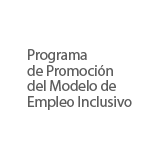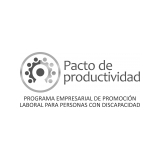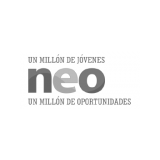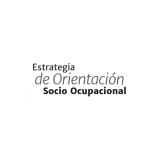EMPLOYMENT ORIENTED EDUCATION

A COUNTRY WHERE
SITUATION IN WHICH SOMEONE IS BORN DOESN’T DETERMINE THEIR FUTURE.
We believe on appropriate education and inclusive employment as powerful social mobility tools. This is achieved when any person can acquire the necessary competences and information to join the job market successfully, and when, at the same time, the organizations (employers) can count on human resource selection processes that guarantee equal opportunities for all the candidates that have the required competences.
We built the Inclusive Employment Model for Vulnerable Population
in alliance with the Fundación ANDI and USAID through ACDI/VOCA.
This is a conceptual tool that promotes the identification of actors, sections, moments, strategies, methodologies, and thematic components related to the job market access of populations that are traditionally excluded from it.
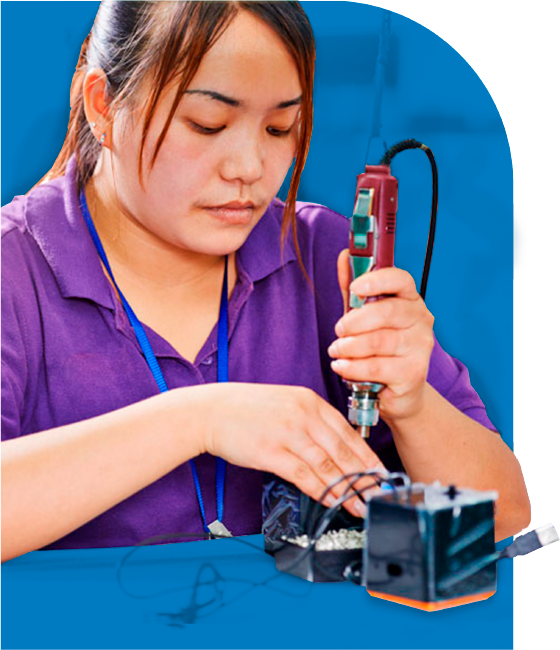
This model puts forward an integral view of the system, and seeks to attack the barriers that prevent these population from accessing and remain in the job market.
These gaps were not only identified through direct contact with the people, but also through a systemic analysis of the territorial barriers in the education and job ecosystems, of the guidelines, and of political actions in the legal framework.
The structure of the Model is complemented by the analysis of action levels. When thinking about the “how”, these allow the visualization of the different paths through which each of the key strategic points can be worked through. Some of these take direct action with the people in vulnerable populations; others execute activities directly with the companies; others work towards the institutional strengthening of the entities that provide education, training, mediation or employment management; and others implement activities in the territorial level. For example, school level youth orientation can be done through direct activities with the students after school hours (action level 1), through strengthening the schools’ ability to provide orientation (action level 3) or through influencing the public resource allocation or the action frameworks of ministries and local governments (action level 4).
The operational drivers and other key elements such as the measuring mechanisms, the topics of each component on each section, the methodologies and key tools, the differential action measurements according to the different populations, the mechanisms through which resources are allocated, and others are defined and updated taking this structure into account.
The Model, then, is conceived as a tool that provides guidelines to improve the access of vulnerable populations to the job market from a territorial logic that considers each region’s characteristics, variables, and needs. Additionally it allows us to guide the design and implementation of current inclusive job promotion initiatives, projects and territorial policies, as well as to contribute to the necessary articulation of the actors and initiatives in the territories.
| If you want to know more you can DOWNLOAD THE COMPLETE MODEL HERE |
Our model
According to the Inclusive Employment Model
the majority of actions required to reduce the barriers that affect the probability of accessing and staying in the job market
can be portrayed as a matrix of stretches (columns) y and components (rows)
The stretches are the different stages a person goes through from education to formal employment. The components allow the visualization of the topics that represent the biggest barriers.
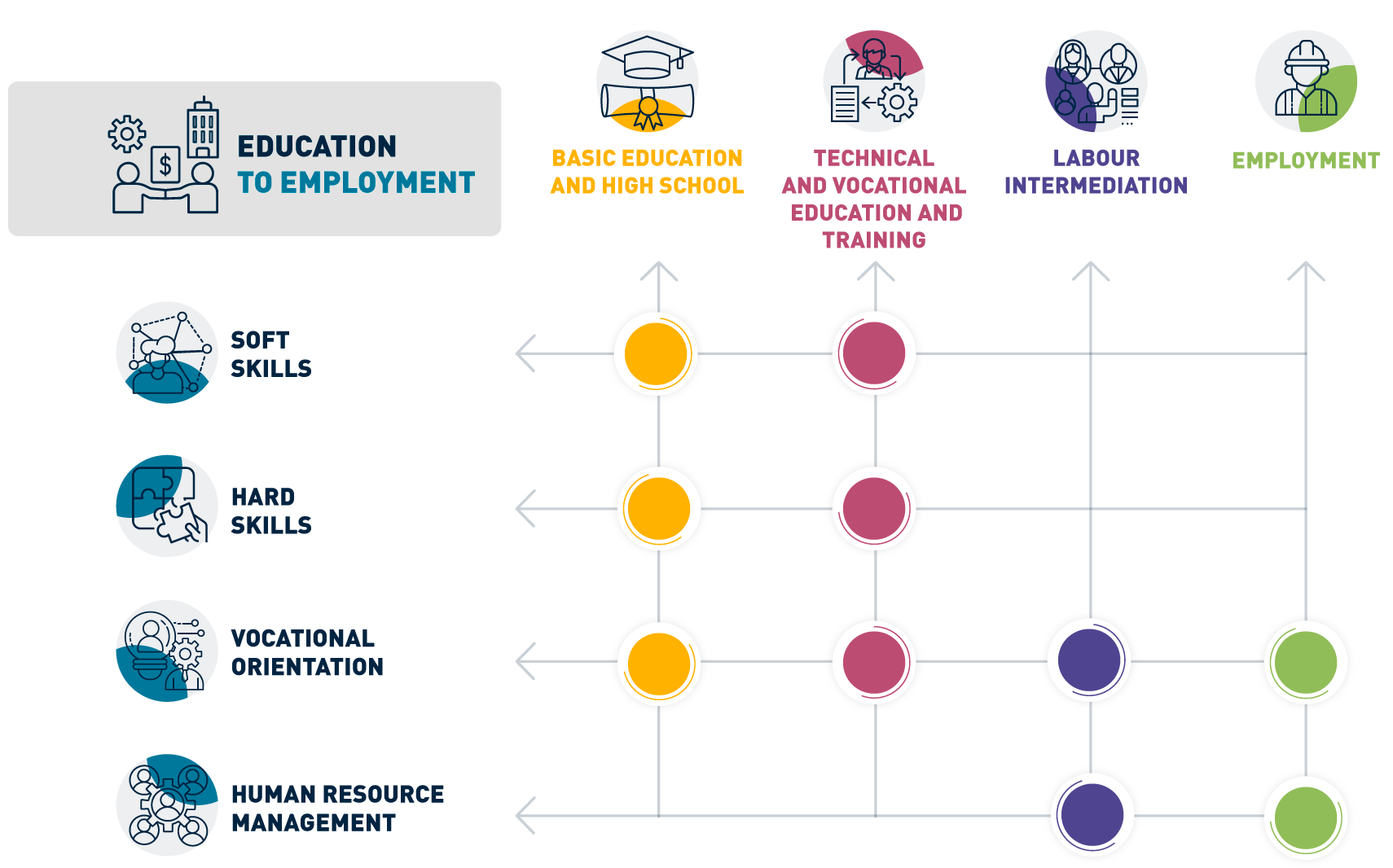
Elements
In the light of this Model we propose
the following 10 action packages around which efforts should be made in each territory.
Strengthening the hard competence
in schools
Math, and reading and writing

Strengthenin
the abilities for life during
the school stage

Orientation of the youth
during their school years

Strengthening the specific professional
competences

Strengthening the general
professional competences

Orientation and support of people
during their professional training

Orientation and support
of job seekers

Promoting the communication with companies
to promote job intermediation

Orientation and support
of employees

Supporting the companieS
and qualifying of their human resource
selection processes


